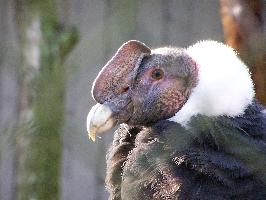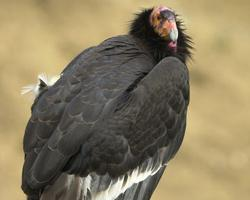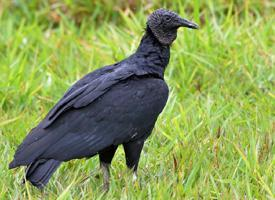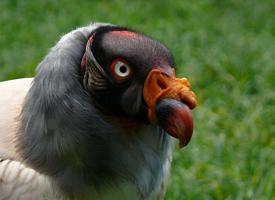
Váhy a míry
| Délka rozpětí křídel | od 3 do 3,5 m |
|---|
Biologická data
| Délka života | 30 r |
|---|
Popis zvířete
The King Vulture (Sarcoramphus papa) is a strikingly colored bird that reigns supreme among the New World vultures, not by size, but with its vivid appearance and regal bearing. This species is found across a vast range from southern Mexico through Central America to South America as far south as northern Argentina. It prefers tropical lowland forests, savannas, and grasslands, thriving in both undisturbed and slightly disturbed habitats.Physically, the King Vulture stands out with its impressive size, measuring about 67-81 cm (26-32 inches) in length, with a wingspan that can reach up to 2 meters (6.5 feet). It weighs between 2.7 and 4.5 kg (6-10 lbs), with males and females being similar in size. Its plumage is primarily white, with contrasting black flight feathers and tail. This coloration, unusual among vultures, gives it an almost majestic appearance as it soars high in the sky.
One of the most distinctive features of the King Vulture is its head and neck, which are bald, as is typical for vultures, to keep clean while feeding on carrion. However, it's the coloration here that is truly remarkable; a vivid palette of red, orange, blue, and purple adorns its skin, with intricate patterns that can vary significantly between individuals. This colorful skin is believed to play a role in communication among the vultures. Adding to its distinguished look is a prominent, fleshy caruncle on its beak, more developed in mature individuals, which along with its bright red eye, gives it an almost otherworldly appearance.
The King Vulture's beak is heavy and hooked, designed for tearing flesh. Unlike many other vulture species, it does not have a strong sense of smell and relies on its keen vision to locate food. It often plays a crucial role at a carcass, as its strong beak can tear open the tough hides of dead animals, allowing smaller scavengers access to the feast. Despite its fearsome appearance and dietary habits, the King Vulture is a silent bird, lacking the vocal organs to produce more than low grunts and hisses.
In terms of behavior, the King Vulture is a solitary bird or seen in pairs, though it will congregate with other vultures at large food sources. It is a powerful flier, utilizing thermals to soar gracefully for hours with minimal effort. This bird is not migratory, though it may move locally depending on food availability.
Breeding habits of the King Vulture are less observed, but it is known that they are monogamous and tend to nest in hollows of tall trees, laying a single egg. Both parents share in the incubation duties and in feeding the chick once hatched, demonstrating a level of parental care that ensures the survival of their offspring in the challenging tropical environment.
The conservation status of the King Vulture is currently listed as Least Concern by the IUCN, though like many species, it faces threats from habitat destruction and the changing landscape of the tropical Americas. Its presence in the ecosystem is vital, acting as nature's cleanup crew, preventing the spread of disease by consuming dead animals. The King Vulture, with its unique beauty and ecological role, is a symbol of the rich biodiversity and complexity of the tropical forests it calls home.
Mapa výskytu
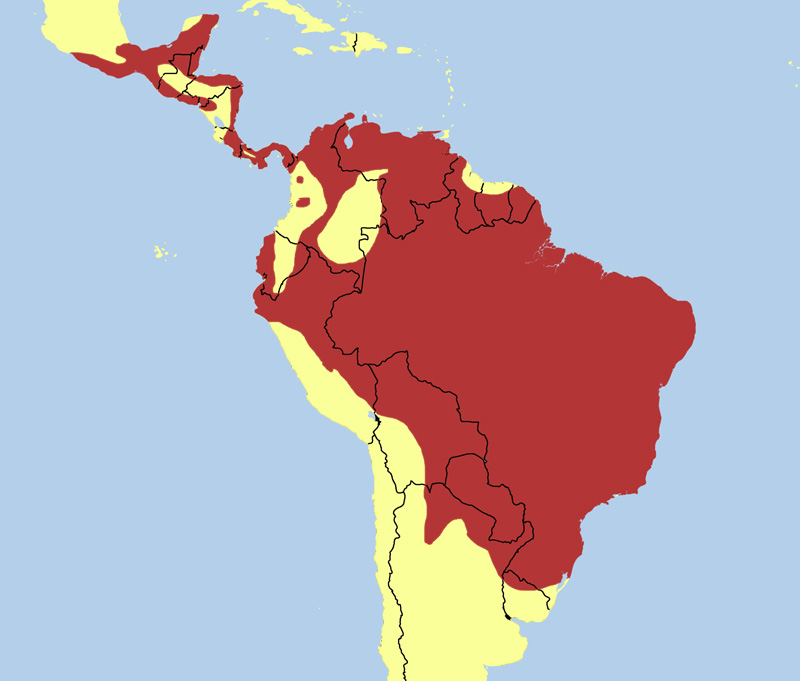
Podobná zvířata
Nové fotografie zvířat
Top 10 zvířat
- Chinese water dragon (Physignathus cocincinus)
- Galápagos tortoise (Geochelone nigra complex)
- Dolphin gull (Leucophaeus scoresbii)
- Japanese macaque (Macaca fuscata)
- Colombian red howler (Alouatta seniculus)
- Sea urchins (Echinoidea)
- Moustached guenon (Cercopithecus cephus)
- Diana monkey (Cercopithecus diana)
- Common reed warbler (Acrocephalus scirpaceus)
- Common house mosquito (Culex pipiens)
